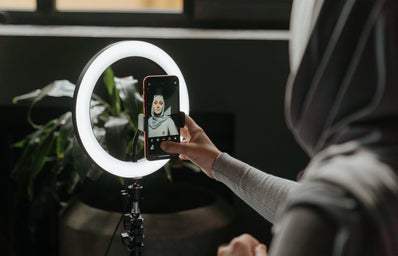Did you know that the photos you upload to social media platforms like Facebook and Instagram are being used to train machine learning algorithms? Every time you post a photo, you’re potentially contributing to a massive dataset that’s being used to teach machines how to recognize and categorize images.
Facebook, for instance, has a massive dataset of photos, which it uses to train its facial recognition algorithms. This means that every time you upload a photo to Facebook, you are potentially contributing to the training data that powers their facial recognition technology. Similarly, Google uses social media photos to train its machine learning algorithms, including its image recognition and object detection software. By analyzing the millions of photos uploaded to social media platforms every day, Google can train its algorithms to recognize different objects and patterns.
This may not seem like a big deal at first glance, but the implications are significant. The algorithms being trained on these photos are used in everything from facial recognition software to self-driving cars. And when these algorithms are trained on photos that are not diverse and representative, they can perpetuate existing biases and inequalities.
For example, if the majority of photos used to train a facial recognition algorithm feature white faces, it’s more likely to misidentify people with darker skin tones. This can have serious consequences, from misidentification at airport security to wrongful arrests.
Additionally, the use of these photos in training data raises important questions about consent and privacy. Many people are unaware that their photos are being used in this way, and may not feel comfortable with the idea of their image being used to train machines without their knowledge or permission.
So, what can be done to address these concerns? For starters, social media platforms must be more transparent about how user data, including photos, is being used. Users should have the ability to opt out of having their photos used in training data if they so choose.
Additionally, the tech industry as a whole must work towards creating more diverse and representative training data. This means actively seeking out and including images of people from underrepresented communities, so that the algorithms being trained are better equipped to recognize and accurately categorize all individuals.
As individuals, we can also take steps to protect our privacy and data. This includes being mindful of the photos we upload to social media and considering the potential implications of sharing them.
In conclusion, social media photos are increasingly being used as a valuable source of training data for machine learning algorithms. While this has many potential benefits, such as improved facial recognition and sentiment analysis, it also raises ethical concerns about privacy and bias. As such, companies need to take steps to mitigate these issues and ensure that their use of social media data is transparent and ethical. As consumers, it’s also important to be aware of how our personal photos and data are being used and to advocate for responsible and ethical practices in the development and use of machine learning technologies.


